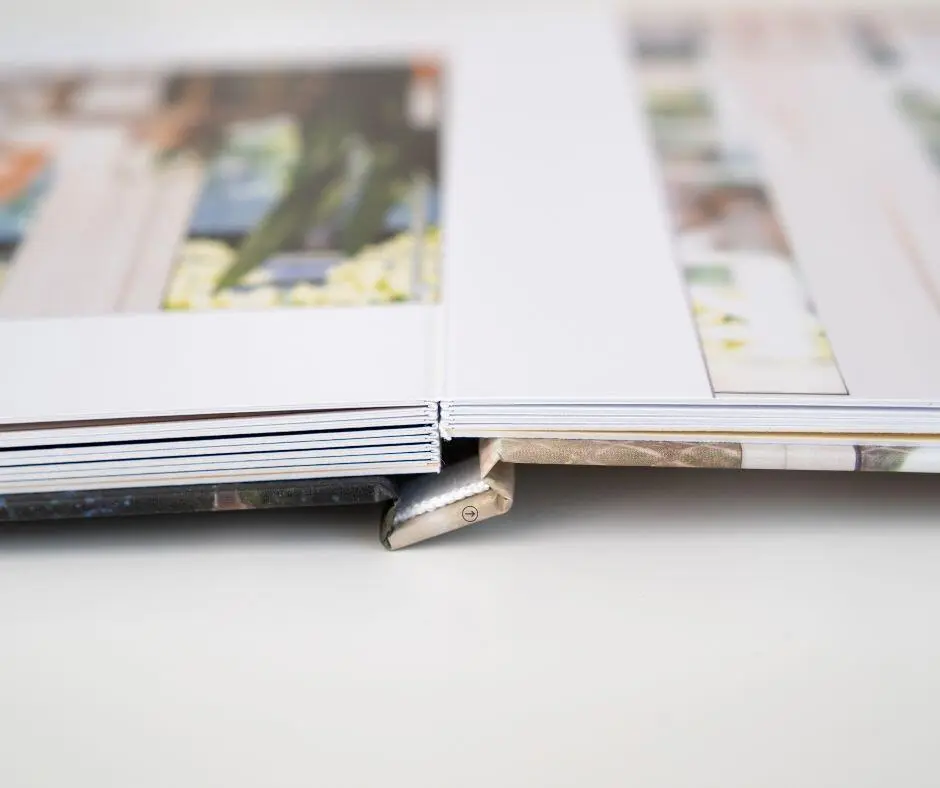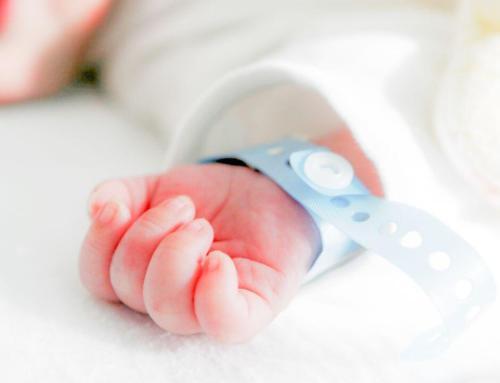What do we say about ourselves – and what kind of life you can offer a child – in just a few pages of pictures and words? Where do we even start?
Sound familiar? Aside from the mountains of paperwork and documentation, creating an adoption profile book can be one of the most daunting tasks in your adoption journey. You may already have some ideas about your book, or a picture in your head of what it will look like – but the process of going from “idea” to “complete printed book” seems overwhelming.
Breaking down the process of developing a profile book into steps can not only make the process feel more manageable, it can lead to a better finished book. If you’re struggling to get started, follow our step-by-step process to take the stress out of creating your book.

1. Explore printing options and choose a site to print from.
Once you’ve chosen a site, you can decide on a shape, size (we recommend no larger than 8.5”x11”) and number of pages from their available options. Making this decision early on can make the rest of the process easier, because it will serve as a guide.
Some of the most common options used by our families are Shutterfly and Mixbook.
2. Decide on an aesthetic for your book.
Your design should reflect your personalities and lifestyle. Looking around your home can be a great starting point. What kind of style suits your family best? Fun and whimsical? Modern and sophisticated? Rustic and outdoorsy? Warm and friendly?
If you are using a printing service like Shutterfly or Mixbook, browse through their templates and ideas. You may want to start with one of their pre-designed books, or their examples might spark ideas for your own book.

3. Create a style guide for a cohesive look.
Books that have a well-defined style look more polished and thoughtful. Too many different fonts, colors, backgrounds, etc.. can quickly make your book look cluttered and overwhelming to read. If you are using a template from a photo site, you might decide to use the colors and fonts already included – but feel free to customize it to suit your style better.
- Choose a color palette that reflects your style. Coolors.co is an online palette generator that can you can use to create a customized color scheme that works together.
- Choose fonts for headings, subheading and body text. A contrasting accent font for accents like captions can help grab attention for captions or other stand-alone text. If you are using a predesigned template from a photo site, you’ll have limited options to choose from. If you’re designing from scratch, Font Joy is a great online resource for pairing fonts.
- Consider elements like captions, spacing, borders or decorative graphics. These should be consistent throughout.
4. Decide what information you would like in your book, and create an outline.
This is the step that many families struggle with – and for good reason! It is difficult to condense all the facets of your life down into 20 or fewer pages. You want to share enough that the expectant parent gets a complete picture, but you don’t want to be so much information that’s overwhelming.
One way to approach your book is to imagine you’re telling the story of your life. When you tell a story, you aren’t just listing off facts. You’re provide context, emotion and a complete picture that can help an expectant parent connect to your experiences. It also helps your book find flow naturally and by help you narrow down what to include. If it feels unnecessary to the story you’re telling, it’s probably ok to leave out.
Ideas for pages to include:
- Welcome/Dear Expectant Parent
- About us
- Individual overviews
- Your descriptions of each other
- Your families
- Your hobbies
- Your home and neighborhood
- Your pets
- Fun facts & favorites
- How you met
- What adoption means to you
- Travels
- Favorite holidays/celebrations
- Family traditions
- Faith/religion
- Volunteer work or community involvement
Once you’ve decided on what elements of your story to include, decide the order of pages and how many pages each section should be. Actually drawing this out can help you visualize what the book will look like, but also prevent you from ending up with an uneven number of pages.

5. Choose photos for your pages.
You’ve heard the saying, “a picture is worth a thousand words” and this is especially true when it comes to adoption profile books. Most expectant parents will flip through your book looking at your pictures before they read any text, which is why we recommend choosing them first.
Instead of telling expectant parents that you like to garden, or your favorite vacation was to Disney World, show them! You’ll get the same point across, but quicker and in a way that also allows you to show off your personality.
A few things to note on choosing images:
- Your cover should show your face(s) clearly – no hats or sunglasses. We recommend professional photography for your cover photo. Your cover photo is your first impression, so make it a good one!
- Use original or high resolution image file for the best print quality. If using an image taken by a smartphone – and we definitely encourage you to include fun, candid photos – upload it at the full file size.
- If your photos are all different styles, lighting, etc., applying a filter to all images can help them look more cohesive. Canva will allow you to upload, crop and filter your images using their free plan.
- More is not always better. For most pages, 2-4 photos are ideal. Got an image you love? A single photo using a full page can have a big impact.
6. Write content for each page…
…but make it short and sweet. Most people skim through books and large blocks of text get passed over, at least initially. Use headings, bullet points or photo captions to convey highlights or important messages, and paragraphs to explain in more detail.
Your book should begin with an introduction, but please do not use “Dear Birth Parent”. Expectant parents do not become birth parents until after they have signed relinquishment papers, and until the time comes (if at all), they should not be referred to in that way. As an alternative, you can begin your letter with a simple “Hello,” “Dear Expectant Parent” or other greeting.
7. Put it all together!
With the groundwork laid and a solid plan in place, it’s time to start uploading your content and arranging your pages. A few additional design tips to keep in mind:
- Don’t be afraid of “white” space.
- Pay attention to margins. Ideally, spacing between photos should be consistent throughout the book, but at the very least, each page should have consistent spacing.
- Print your book out at home for a better idea of what the final product will look like, and make changes as needed.
- Ask friends, family and your adoption coordinator to review a draft. In addition to looking for typos or grammatical mistakes, you want to make sure your book is a true and complete reflection of your family.
- Have a single copy printed and shipped to you. Colors and margins may look different in the printed version, and you may decide you want to make some adjustments.
If creativity is not your thing, that’s OK! Design services like Kindred + Co and Little Ampersand Co. can create and produce your adoption profile book for you for a comprehensive fee.
Whatever process you use to create your book, remember that the most important thing is to be authentic and open. Don’t be afraid to show the “less than perfect” side to your life, because that realness is something expectant mothers say they looked for.





